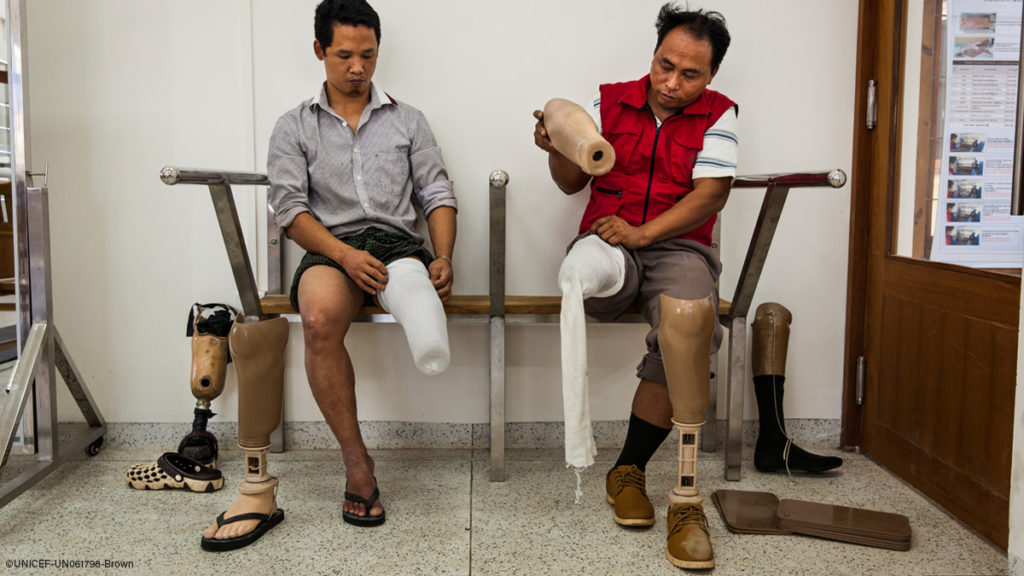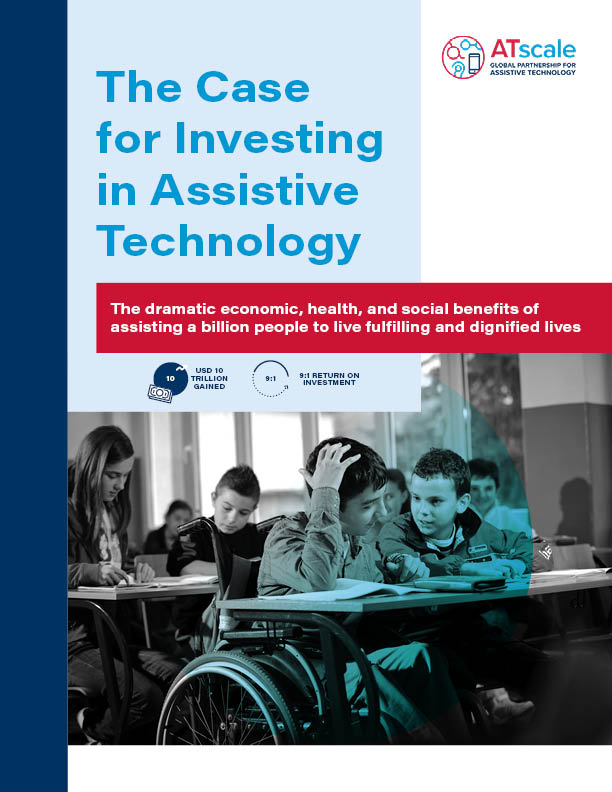As the world grapples with COVID-19, the pandemic is also highlighting and deepening pre-existing inequalities. This year the International Day of Persons with Disabilities reflects that with the theme “building back better: toward a disability-inclusive, accessible and sustainable post COVID-19 world”.
People with disabilities are among the most excluded and hardest hit by this crisis in terms of fatalities, according to the United Nations. There are over a billion people living with disabilities globally, but only one tenth have access to the assistive products, such as wheelchairs, hearing aids, prostheses, and eyeglasses they need – 90 percent are left behind. This gap is most prominent in low- and middle-income countries.
A compelling case for investing in assistive technology
Assistive technology can improve the quality of life of persons living with disability. Beyond allowing them to perform everyday tasks more easily, it opens opportunities in education and employment enabling them to live more independent and dignified lives.
Having access to assistive technology can be the difference between failure or success in school, employment or unemployment, a life of opportunity or of dependency.
Especially in rural areas, low access to assistive technology increases the socio-economic burden.
Education is a way out of poverty, but many children with visual, hearing and mobility impairments do not have access to the eyeglasses, hearing aids or mobility products they need to make learning possible. As a result, enrollment, school attendance, and primary school completion rates are lower among children living with disabilities. For a child in a low- or middle-income country, access to assistive technology can make a difference of $100,000 in lifetime income.
Jean Bosco Uwikirebera is a Senior Analyst with CHAI Rwanda. He highlights how assistive technology allowed him to get an education and eventually, a job: “I was able to attend school because I had a chance to get crutches, and then a prosthesis. I was able to get a job because I went to school. Many people that I know were not able to go to school or participate in other activities simply because they lacked the assistive technology that they needed. Especially in rural areas, low access to assistive technology increases the socio-economic burden. Everyone has a role to play, and everyone should be given a chance and opportunity to work for change.”
Despite the benefits of assistive technology, access in low- and middle-income countries is still a challenge.

Increasing access to assistive technology
CHAI is partnering with the UK Aid-funded AT2030 program, which is led by the Global Disability Innovation Hub, and with ATscale, the Global Partnership for Assistive Technology, to increase access to assistive technology. CHAI’s key role across initiatives will be to support the development of data systems, national strategies, procurement guidelines, provision standards, as well as implementing government-led programs and market-oriented interventions aimed at improving accessibility and affordability.
Speaking about this work, Gboyega Ibukun Alesinloye, an Associate with CHAI Nigeria who is a polio survivor and uses elbow crutches and a wheelchair, highlighted the need for a comprehensive approach: “It is very important to address assistive technology access through a multi-faceted approach like we do for any emerging health or social issue. Not only should we aim to increase access to assistive technology, but we should also look to address associated mental, social, and emotional needs through rehabilitation, rights, and socio-medical approaches.”
Vicki Austin, Co-Founder and CEO of the Global Disability Innovation Hub, emphasized the importance of getting the basics right. “Disability innovation is not always about designing the best new technology or funky prosthetic – sometimes it is about the very ‘un-sexy’ hard work of designing the tools, policies, budget lines, and training necessary to enable that technology to change lives. Assistive technology markets need both ‘making’ and ‘shaping’ if we are going to drive inclusion for almost a billion humans; and never has the call to action been more pressing than when COVID-19 is hitting disabled and older people hardest. We cannot afford to take our foot off the gas now we have started to understand what needs to be done.”
The new Case for Investing in Assistive Technology, published by ATscale, describes the enormous gains that access to assistive technology can have in health, for the community, and the economy. Investing in the provision of four assistive products – hearing aids, prostheses, eyeglasses, and wheelchairs – results in a return on investment of 9:1.
Never has the call to action been more pressing than when COVID-19 is hitting disabled and older people hardest.
“The extent of the potential economic impact exceeds what we expected”, said Jon Lomøy, former Director General of the Norwegian Agency for Development Cooperation (Norad) and Board Chair of ATscale. “Assistive technology presents one of those instances where we ask ourselves why something so clearly beneficial has such a hard time winning recognition. Yet, we know that the seemingly simple task of providing eyeglasses, wheelchairs, hearing aids, or prostheses to all those who need them, is actually the result of thousands of decisions – in policies, supply chains, and investment risk – often taken amongst other competing needs and priorities. This is among the reasons why, so far, we have made nowhere near enough progress in making assistive technology available to all who need it.”
Investing in assistive technology not only has huge benefits in health, social inclusion, and quality of life, it makes good economic sense. As more governments and donor organizations allocate resources for assistive technology in their budgets and integrate assistive technology within health plans, new opportunities for the private sector will be unlocked. There will be business models and approaches that create win-win situations that increase access to assistive technology for those need it and are also attractive for businesses.
Leaving no one behind
Now is the time to redouble our efforts to ensure governments have everything they need to make access to assistive technology a reality for all. Now is the time to prioritize action and investment in assistive technology – to provide access to the 90 percent around the world who are left behind.
To that end, the Global Disability Innovation Hub will continue to work with CHAI into 2021. The GDI Hub is investing an additional £1 million in four African countries – Liberia, Nigeria, Rwanda, and Sierra Leone – to trial strategic and innovative methods of reaching more people with assistive technology.
“We are grateful to UK Aid for continuing their support at this challenging time. Together, we will continue to combine our strengths to make a real difference to the people that need it most,” said Vicki.






